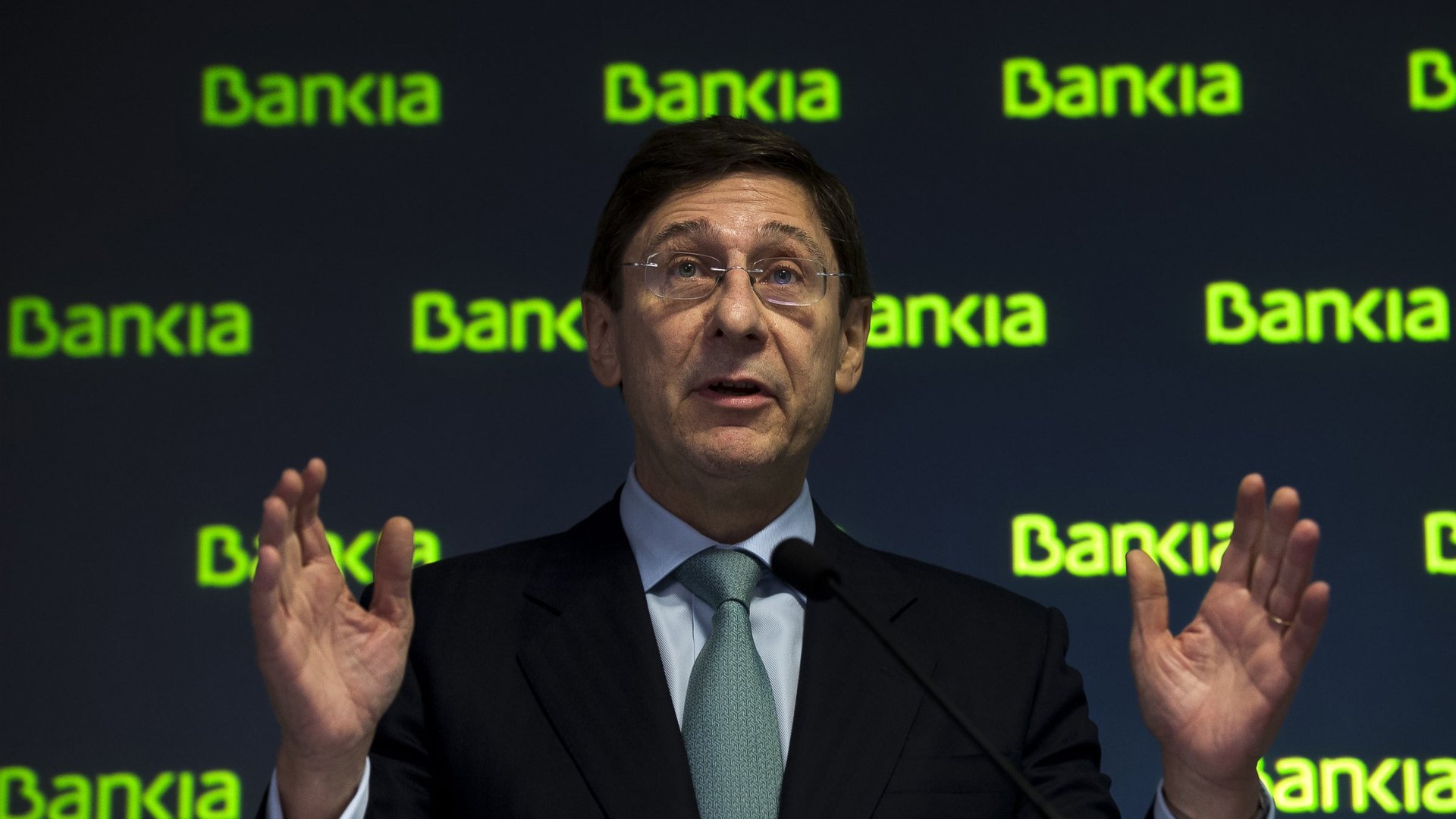When losing €19 billion is a good thing
Spain’s Banco Financiero de Ahorros (BFA) reported a loss of €21.2 billion ($27.9 billion) in the fourth quarter of last year. Nearly all of that, €19.2 billion, stemmed from its troubled subsidiary, Bankia (BKIA-ES). Formed after a merger of seven regional banks—or cajas—in 2011, it’s little surprise that Bankia has been destroyed by a Spanish housing bubble and economic downturn; those banks with stronger balance sheets like Banco Santander and BBVA have credited their only growth recently to operations they do outside Spain and Europe.


Spain’s Banco Financiero de Ahorros (BFA) reported a loss of €21.2 billion ($27.9 billion) in the fourth quarter of last year. Nearly all of that, €19.2 billion, stemmed from its troubled subsidiary, Bankia (BKIA-ES). Formed after a merger of seven regional banks—or cajas—in 2011, it’s little surprise that Bankia has been destroyed by a Spanish housing bubble and economic downturn; those banks with stronger balance sheets like Banco Santander and BBVA have credited their only growth recently to operations they do outside Spain and Europe.
Bankia still doesn’t look pretty. Its shares on the Bolsa de Madrid, at around €0.30, are worth less than one-tenth of what they were a year ago. It is no longer on the list of Spain’s largest 35 companies, the IBEX 35, having been voted off at the end of last year. Its former CEO, one-time IMF managing director and Spanish politician Rodrigo Rato, is now under investigation for fraud, price-fixing, and embezzlement after accounting irregularities showed Bankia’s financial health to be much more fragile than it had seemed. It has 13% non-performing loans on its books are non-performing (versus 7.6% in 2011). It wiped out 350,000 shareholders—many of which were “small savers and pensioners“—after it reported a negative equity of €4.2 billion in December. Junior bondholders and holders of other hybrid instruments took losses as high as 46%. In its restructuring last year, it had planned to slash 6,000 jobs and axe the salaries of remaining employees by 40%-50%.
That said, it’s in a better financial position than it was last year. In December, Bankia moved €16.4 billion in assets to Sareb, a Spanish bad bank created to hold the banking system’s most toxic assets. The bank’s parent, BFA, received €18 billion in capital from the government, putting Bankia in what its CEO calls “a solid position, with a clean balance sheet, good solvency levels and an excellent liquidity situation.” Bankers believe the cleansing will one day prime the bank for sale, pegging the date at around 2017.
At the very least, its record, fourth-quarter losses suggest that Bankia isn’t holding back and putting off the pain. In forcing bondholders to take losses, it axed potentially the largest piece of its long-term debt and avoided having to service payments later. Spain’s Fund for Orderly Bank Restructuring (FROB) will decide in March exactly how large those losses will be, but most expect that Bankia’s shareholders will be almost completely wiped out. Not to worry, though. The bank thinks it might be able to eke out a profit this year. Isn’t that good news?